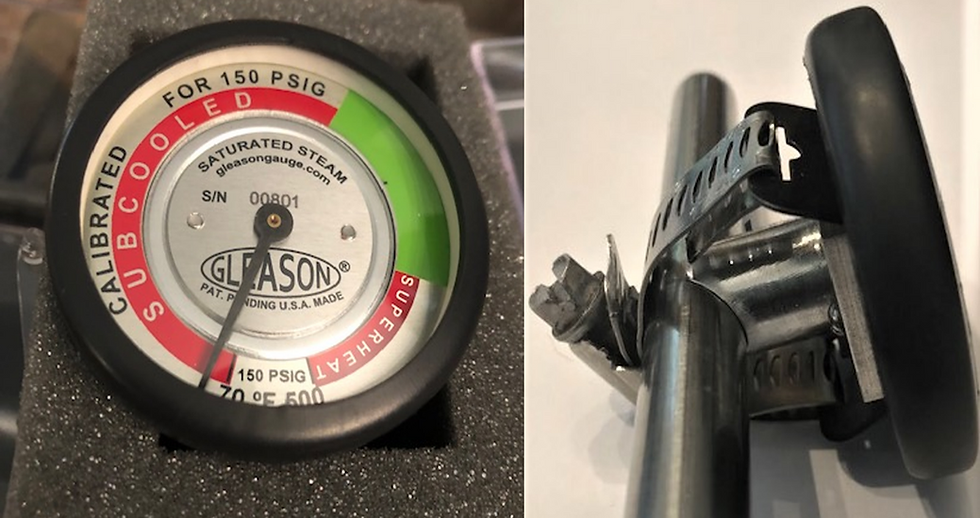WATERHAMMER Not Good
- SiteWorks Mechanical

- Dec 24, 2021
- 3 min read

Is your steam system an accident waiting to happen?
Waterhammer: How do you know?
Maybe I preach too much on boiler safety but in the past I have found 20% to 25% of the steam traps in a typical plant to be in a failed condition. When you walk into a steam plant and see steam coming out of the condensate receiver tank, that should give you an idea that there could be a problem.
Failed steam traps will cost you money, make no mistake about that. Cost of fuel, added energy to produce steam, loss of treatment chemicals, cost of wages to keep up with the losses, not to leave out the chance of a boiler incident. It "steam rolls," pardon the pun.
Steam traps can fail at anytime and you can't test all day every day but you can monitor as you do your walk arounds.
In reviewing a system recently, Gleason Steam found a drip leg steam trap that was at ambient temperature. Despite being evaluated just 9 days earlier by plant personnel and found to be working properly we found the steam trap to be failed closed. Upon opening the Y-strainer blowdown, subcooled condensate was evacuated for approximately 4.5 minutes.

Why is this a critical safety concern?
Very simply:
· The term "saturated steam" has nothing to do with moisture. Saturated steam is dry.
· When steam leaves the boiler, it is extremely high quality. It's the responsibility of the facility personnel along with proper system design to keep it that way.
· If steam traps do not remove condensate from the steam system or if they are slow in doing so a subcooled condition will develop. Waterhammer can exist only if there is subcooled condensate present.
· Waterhammer can cause death or injury to personnel, damaged components, failed pipe supports, ruptured piping, site shutdowns, and legal settlements.
· Aside from waterhammer, subcooled condensate can result in freezing, erosion, corrosion, lost heat transfer, lost production, turbine-driven equipment failures, damaged flare rings or tips, steam leaks, and increased GHG emissions.
How is waterhammer avoided? Wayne Kirsner, P.E. said it best.
"No subcooling, no waterhammer."
The only thing we ever want in a steam system is steam. Condensate must be removed, preferably as soon as it's formed. This is ensured by proper steam system design (such as properly sized and appropriately placed drip legs) and appropriately selected and sized steam traps. Steam traps must function properly, be regularly evaluated and between testing intervals be continually monitored for a plugged or failed-closed condition. In the featured example (above), although the facility checks their steam traps every 6 months, after just several days a dangerous subcooled condition developed. Chances of a catastrophic waterhammer event were great. What is your facility's testing interval? Q: How can you be made aware of subcooled conditions between steam trap testing intervals?
A: By continually monitoring (at-a-glance) temperature as compared to saturated temperature at the system's operating pressure primarily just upstream of the steam traps.


Pertinent Steam System Best Practices:
· Evaluate all steam trap stations often and regularly.
· Specify point-of-use continual monitoring of system temperature as compared to saturated temperature at the system's saturated pressure. Ex: At steam traps, drip legs, tracers, upstream of isolation valves, strainers, piping, vessels, unit heaters, process heaters, reboilers, etc.
· Provide regular, recurring steam system training for personnel.
Merry Christmas from SiteWorks Mechanical and a very safe and prosperous New Year.




Commenti